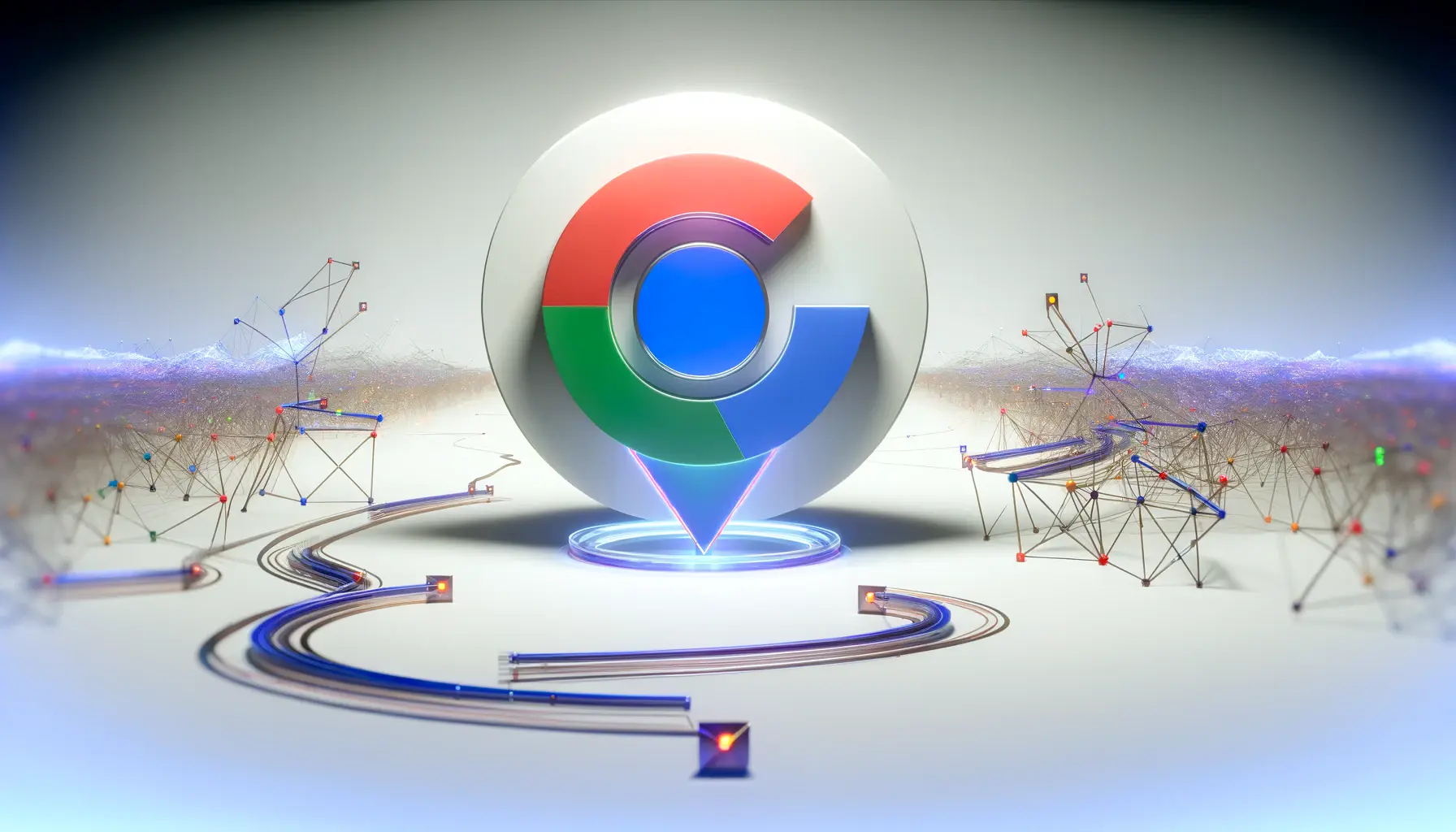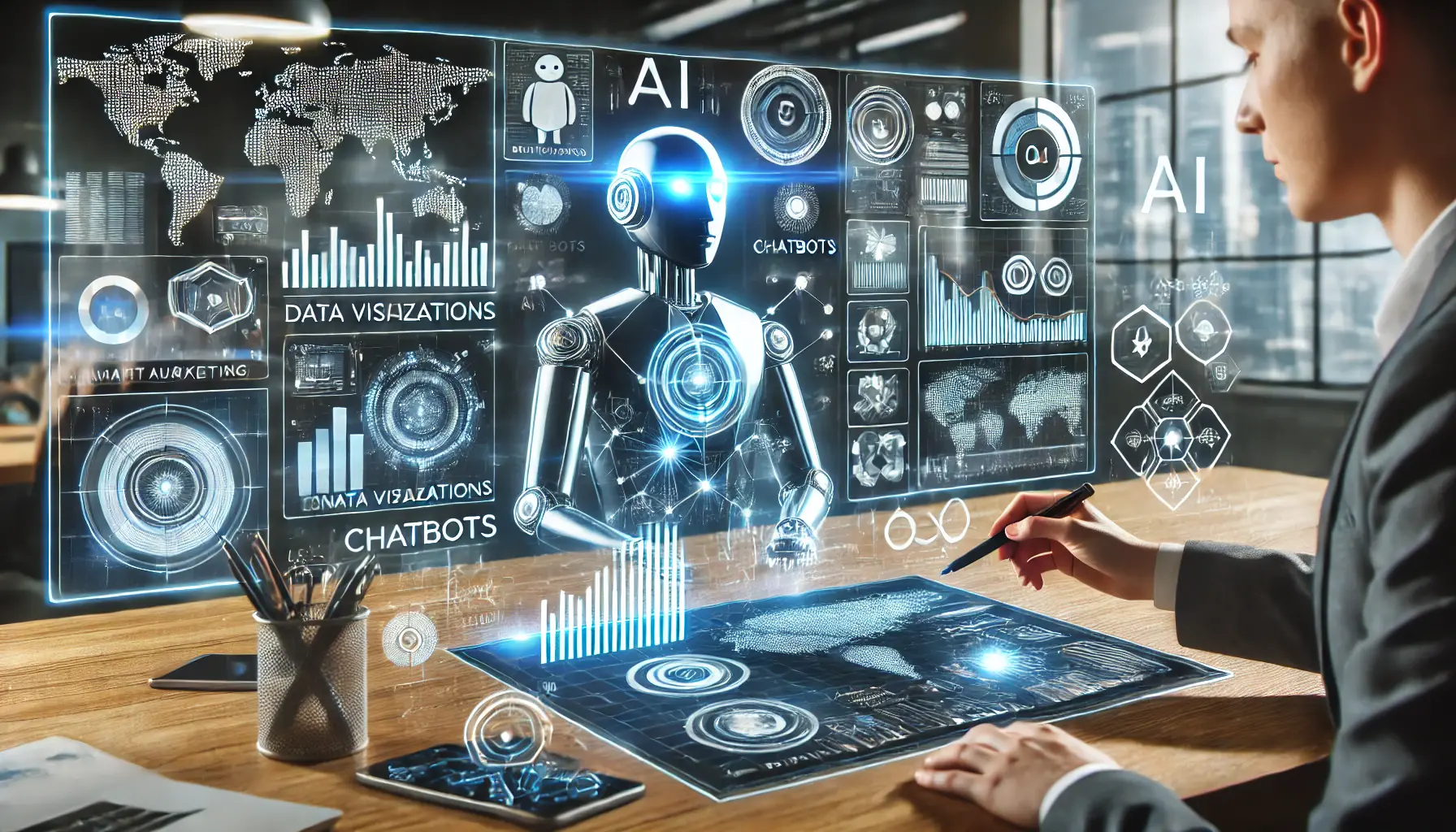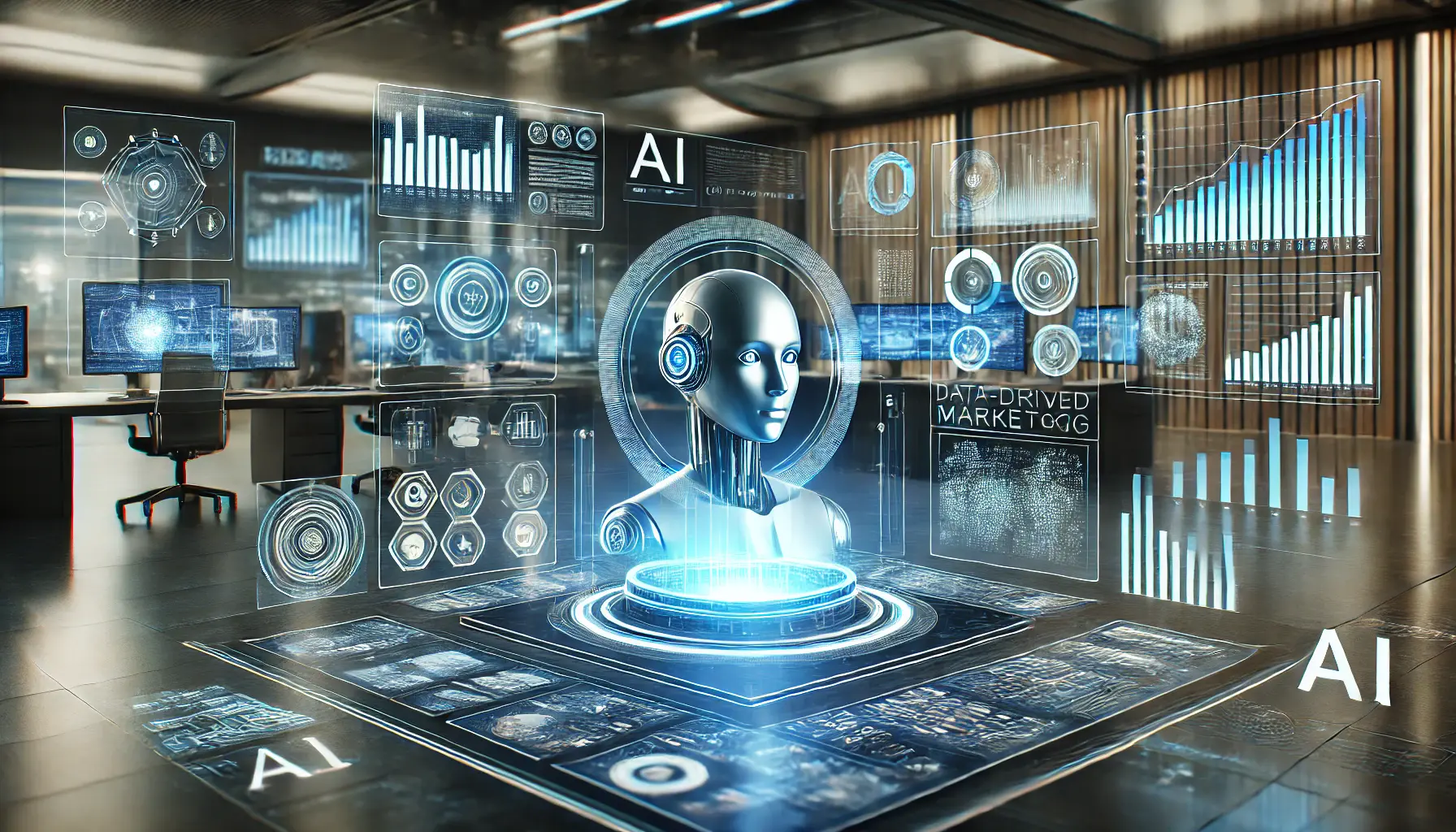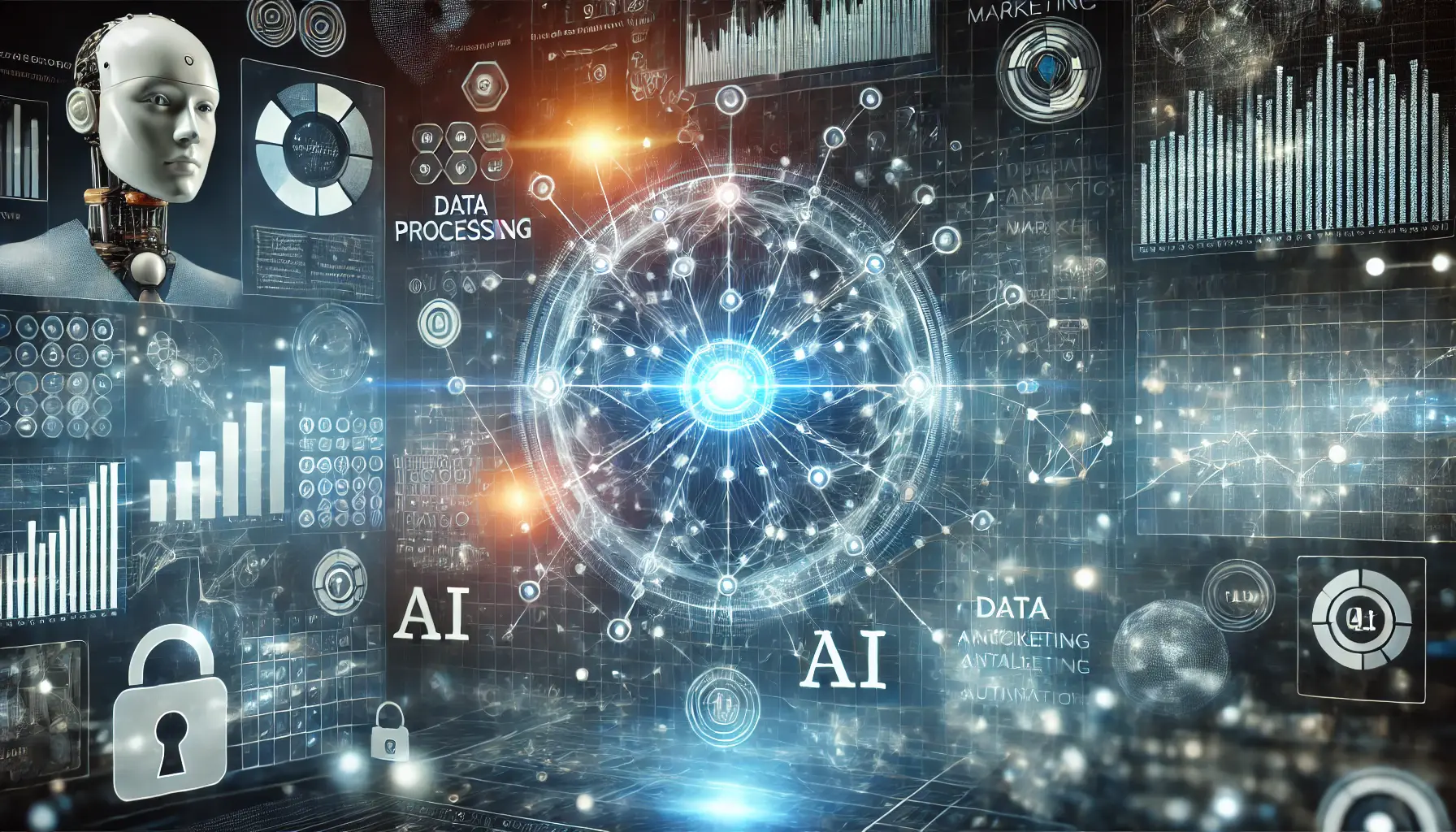The digital landscape is ever-evolving, with innovations and technologies emerging at a breakneck pace.
Among these, Google’s Bard stands out as a transformative force, redefining how we interact with the digital world.
This artificial intelligence (AI) chatbot, developed by one of the leading tech giants, is not just another addition to the AI ecosystem.
Instead, it represents a significant leap forward, offering a glimpse into the future of digital communication, content creation, and information retrieval.
Google’s Bard, with its advanced language model capabilities, is designed to understand and generate human-like text, facilitating a more natural and intuitive interaction between humans and machines.
This breakthrough technology is not only enhancing user experience but also pushing the boundaries of what AI can achieve in various sectors, including education, healthcare, marketing, and beyond.
The implications of Bard’s introduction into the digital landscape are vast, signaling a shift towards more intelligent, responsive, and personalized digital services.
- Introduction to Google Bard
- Enhancing User Experience with Bard
- Bard’s Role in Content Creation and Digital Marketing
- Transforming Education and Learning with Bard
- Optimizing Business Processes with Bard
- Challenges and Considerations in Implementing Bard
- Future Directions and Potential of Bard
- Embracing the Future with Google Bard
- Google Bard FAQ: Navigating the Future of AI
Introduction to Google Bard
What is Google Bard?
At its core, Google Bard is an AI-driven chatbot that leverages the power of Google’s advanced language models to provide users with information, answer questions, and even generate creative content.
Built on the foundation of Google’s Language Model for Dialogue Applications (LaMDA), Bard is designed to understand the nuances of human language, making interactions with digital devices more natural and engaging.
This technology represents a significant step forward in making AI more accessible and useful for everyday tasks and complex problem-solving scenarios alike.
The introduction of Bard into the digital ecosystem marks a pivotal moment in the ongoing evolution of AI technologies.
By harnessing the vast amounts of data available online, Bard can offer insights, generate ideas, and provide solutions in real-time, making it an invaluable tool for users across the globe.
Its ability to process and understand language at a near-human level allows for a more personalized and contextually relevant user experience, setting a new standard for AI chatbots.
The Impact of Bard on Digital Communication
Google Bard’s impact on digital communication is profound, offering a more interactive and engaging way for users to access information.
Unlike traditional search engines that return a list of links, Bard engages users in a conversational manner, providing direct answers and generating content that is tailored to the user’s specific needs and queries.
This shift towards conversational AI is transforming the way we seek and consume information, making digital interactions more akin to human conversation.
Moreover, Bard’s capabilities extend beyond mere information retrieval.
It is equipped to generate creative content, from writing poems and stories to crafting marketing copy, showcasing the potential of AI to assist in creative processes.
This opens up new possibilities for content creators, marketers, and businesses, enabling them to leverage AI for creative and strategic purposes.
The integration of Bard into digital communication tools and platforms is not only enhancing user engagement but also driving innovation in content creation and digital marketing strategies.
Google Bard is revolutionizing digital communication by making interactions more natural, personalized, and engaging, setting a new benchmark for what AI can achieve in the digital realm.
Enhancing User Experience with Bard
The advent of Google Bard has significantly enhanced the user experience across various digital platforms.
By integrating advanced AI and machine learning technologies, Bard offers a seamless, intuitive, and highly personalized interaction model that stands in stark contrast to the more mechanical and impersonal interfaces of the past.
This section delves into the ways Bard is reshaping user experiences, highlighting its role in personalization, efficiency, and accessibility.
Personalization is at the heart of Bard’s impact on user experience.
By understanding and adapting to individual user preferences and behaviors, Bard delivers content and answers that are tailored to each user’s specific needs and contexts.
This level of personalization not only improves the relevance of information provided but also fosters a more engaging and satisfying digital interaction.
Key Features Driving User Experience
- Conversational Interactions: Bard’s ability to engage in natural, human-like conversations makes digital interactions more relatable and enjoyable for users. This conversational approach helps demystify complex information, making technology more accessible to a wider audience.
- Contextual Understanding: With its deep learning capabilities, Bard can understand the context behind user queries, allowing it to provide more accurate and relevant responses. This understanding extends to recognizing nuances in language and intent, further enhancing the quality of interactions.
- Content Generation: Bard’s content generation capabilities are a game-changer for creative professionals and businesses. From generating marketing copy to brainstorming ideas, Bard serves as a creative partner, aiding in the creative process and driving innovation.
Efficiency is another area where Bard significantly improves user experience.
By automating routine tasks and providing quick and accurate information, Bard helps users save time and effort.
Whether it’s scheduling appointments, summarizing articles, or generating reports, Bard’s efficiency transforms how users accomplish their daily tasks, making technology a more effective tool for personal and professional use.
Improving Accessibility with AI
Bard’s impact on accessibility cannot be overstated.
By making digital content more conversational and easier to understand, Bard lowers the barriers to accessing information.
This is particularly beneficial for users with disabilities or those who may find traditional digital interfaces challenging to navigate.
Bard’s intuitive interface and conversational nature make technology more inclusive, extending its benefits to a broader segment of the population.
In summary, Google Bard is not just enhancing the user experience through personalization and efficiency; it’s also making digital technology more accessible and enjoyable for everyone.
As Bard continues to evolve, its potential to transform digital interactions and make technology a more integral and positive part of our daily lives is immense.
The evolution of Bard signifies a leap towards more human-centric technology, where AI serves not just as a tool but as a companion in the digital journey.
Bard’s Role in Content Creation and Digital Marketing
The introduction of Google Bard into the digital landscape has opened up new avenues in content creation and digital marketing.
With its advanced AI capabilities, Bard is not just a tool for information retrieval but a powerful ally for marketers and content creators.
This section explores Bard’s transformative impact on content creation, digital marketing strategies, and how it is reshaping the way brands engage with their audience.
Content creation has always been at the core of digital marketing, and Bard is revolutionizing this process by offering unprecedented levels of creativity and efficiency.
Bard’s ability to generate high-quality, engaging content in seconds is a significant boon for marketers looking to maintain a consistent online presence.
From blog posts and social media updates to product descriptions and ad copy, Bard can handle a wide range of content needs, enabling marketers to focus on strategy and creativity rather than the mechanics of content production.
Revolutionizing Digital Marketing Strategies
- Automated Content Generation: Bard’s capacity to automate content generation helps businesses keep up with the demands of content marketing, ensuring a steady stream of fresh and relevant content.
- SEO Optimization: Bard’s understanding of search engine algorithms and its ability to produce SEO-friendly content makes it an invaluable tool for improving search engine rankings and visibility.
- Personalized Marketing: By analyzing user data and preferences, Bard can help create personalized marketing messages that resonate with individual users, increasing engagement and conversion rates.
In the realm of digital marketing, Bard’s impact extends beyond content creation.
It is reshaping marketing strategies by providing insights into consumer behavior, trends, and preferences.
This data-driven approach allows marketers to craft more targeted and effective campaigns.
Furthermore, Bard’s conversational AI capabilities enable the creation of interactive chatbots and virtual assistants, enhancing customer service and engagement.
Enhancing Brand Engagement and Customer Experience
Bard’s ability to generate dynamic and interactive content is a game-changer for brand engagement.
By creating content that is not only informative but also engaging and interactive, brands can captivate their audience’s attention more effectively.
This leads to improved customer experience, as users find value and enjoyment in the content they consume.
Moreover, Bard’s AI-driven insights can help brands tailor their messaging and content strategies to better meet their audience’s needs, fostering a deeper connection and loyalty.
As Bard continues to evolve, its role in content creation and digital marketing is expected to grow even more significant.
By leveraging Bard’s capabilities, marketers can unlock new levels of creativity, efficiency, and personalization, setting new standards for what is possible in digital marketing.
Google Bard is not just transforming content creation; it’s redefining the entire digital marketing landscape, making it more dynamic, personalized, and efficient.
Transforming Education and Learning with Bard
The integration of Google Bard into the educational sector marks a significant leap towards a more interactive and personalized learning experience.
Bard’s advanced AI capabilities offer unique opportunities for both educators and students, transforming traditional educational methods and fostering a more engaging learning environment.
One of the most notable impacts of Bard on education is its ability to provide instant access to a vast array of information and resources.
This instantaneity not only enhances the research process but also allows for a more exploratory and self-directed learning experience.
Students can ask complex questions and receive detailed explanations, making learning more accessible and enjoyable.
Personalized Learning Experiences
Bard’s AI-driven platform can tailor educational content to meet the individual needs and learning styles of each student.
By analyzing a student’s performance, preferences, and areas of difficulty, Bard can suggest personalized study materials, practice problems, and educational resources.
This personalized approach helps students grasp difficult concepts more effectively and fosters a deeper understanding of the subject matter.
Furthermore, Bard can simulate one-on-one tutoring sessions, providing students with personalized feedback and guidance.
This capability is particularly beneficial in environments where access to human tutors is limited, ensuring that every student receives the support they need to succeed.
Enhancing Teacher Productivity and Creativity
For educators, Bard serves as a powerful tool to enhance productivity and creativity in lesson planning and content delivery.
Teachers can leverage Bard to generate creative teaching materials, design interactive quizzes, and develop engaging lesson plans that cater to diverse learning needs.
This not only saves time but also enriches the classroom experience, making learning more dynamic and interactive.
Bard’s ability to analyze educational content and provide insights into learning trends and student performance also enables teachers to adapt their teaching strategies in real-time.
This data-driven approach ensures that educational content remains relevant and effective, addressing the evolving needs of students.
Facilitating Collaborative Learning
Bard promotes collaborative learning by enabling students to work together on projects and assignments more efficiently.
Its capabilities to facilitate group discussions, brainstorming sessions, and collaborative research projects foster a sense of community and teamwork among students.
By breaking down barriers to collaboration, Bard enhances the learning experience, preparing students for the collaborative nature of the modern workplace.
In conclusion, Google Bard is transforming the educational landscape by making learning more personalized, accessible, and engaging.
As Bard continues to evolve, its potential to revolutionize education and learning is boundless, promising a future where technology and education converge to unlock new possibilities for learners and educators alike.
The true potential of Bard in education lies in its ability to make learning a more personalized, interactive, and collaborative experience, fundamentally changing how knowledge is acquired and shared.
Optimizing Business Processes with Bard
The advent of Google Bard heralds a new era in business process optimization, offering companies across various industries the tools to streamline operations, enhance decision-making, and foster innovation.
By integrating Bard’s AI capabilities, businesses can automate routine tasks, gain insights from data analysis, and improve customer engagement, thereby driving efficiency and growth.
Bard’s impact on business processes is multifaceted, touching on aspects such as operational efficiency, data-driven decision-making, and customer service.
Its ability to process and analyze large volumes of data in real-time allows businesses to identify trends, optimize workflows, and make informed decisions quickly and accurately.
Streamlining Operations and Enhancing Productivity
- Automating Routine Tasks: Bard can automate a wide range of routine tasks, from scheduling meetings and managing emails to generating reports. This automation frees up valuable time for employees to focus on more strategic tasks, thereby enhancing overall productivity.
- Optimizing Workflows: By analyzing business processes, Bard can identify bottlenecks and inefficiencies, suggesting optimizations that can significantly improve workflow and operational efficiency.
Data-Driven Decision Making
Bard’s advanced analytics capabilities enable businesses to harness the power of their data.
By providing insights into market trends, customer behavior, and operational performance, Bard empowers businesses to make data-driven decisions that drive growth and competitiveness.
- Market Analysis: Bard can analyze market trends and consumer data, offering businesses strategic insights into market opportunities and competitive positioning.
- Performance Optimization: Through the analysis of operational data, Bard can identify areas for improvement, helping businesses optimize performance and reduce costs.
Improving Customer Engagement and Service
Bard significantly enhances customer engagement and service by enabling personalized interactions and providing instant support.
Its conversational AI capabilities allow businesses to deploy sophisticated chatbots that can handle customer inquiries, provide personalized recommendations, and improve the overall customer experience.
- Personalized Customer Interactions: Bard can analyze customer data to deliver personalized content, offers, and recommendations, enhancing customer satisfaction and loyalty.
- Instant Customer Support: With Bard, businesses can offer 24/7 customer support, answering queries and resolving issues promptly, thereby improving service quality and customer satisfaction.
In conclusion, Google Bard is transforming business processes by automating tasks, providing actionable insights, and enhancing customer engagement.
As businesses continue to integrate Bard into their operations, the potential for innovation and efficiency is limitless, paving the way for a more agile, data-driven, and customer-centric business landscape.
The integration of Bard into business processes is not just about automation; it’s about leveraging AI to drive strategic decision-making, innovation, and a superior customer experience.
Challenges and Considerations in Implementing Bard
While Google Bard presents a myriad of opportunities for enhancing digital experiences, content creation, education, and business processes, its implementation is not without challenges.
Organizations and individuals looking to leverage Bard’s capabilities must navigate a series of considerations to ensure successful integration and utilization of this advanced AI technology.
Understanding the complexities and potential pitfalls associated with Bard is crucial for maximizing its benefits while mitigating risks.
This section explores the key challenges and considerations in implementing Bard, offering insights into how to effectively harness its potential.
Privacy and Data Security Concerns
One of the primary concerns surrounding the use of Bard and similar AI technologies is the handling of personal and sensitive data.
Ensuring the privacy and security of user data is paramount, as AI systems like Bard require access to vast amounts of information to function effectively.
Organizations must implement robust data protection measures and comply with privacy regulations to safeguard user information and maintain trust.
Additionally, the use of Bard in processing and analyzing personal data raises ethical questions.
Organizations must navigate these ethical considerations carefully, ensuring that Bard’s capabilities are used responsibly and transparently.
Integration with Existing Systems
Integrating Bard into existing digital ecosystems poses technical challenges.
Compatibility with current software, platforms, and workflows is essential for seamless operation.
Organizations may need to invest in infrastructure upgrades or modifications to fully leverage Bard’s capabilities, requiring careful planning and resource allocation.
Moreover, the successful integration of Bard depends on the ability of existing systems to communicate and share data effectively with the AI.
Ensuring interoperability and developing robust APIs are critical steps in this process.
Managing User Expectations
As with any emerging technology, managing user expectations is crucial.
While Bard offers impressive capabilities, it is not a panacea for all digital challenges.
Users may have unrealistic expectations about Bard’s functionality and limitations, leading to disappointment or frustration.
Education and training are essential for helping users understand what Bard can and cannot do.
Clear communication about the AI’s capabilities, limitations, and best use cases can help manage expectations and ensure a positive user experience.
Continuous Learning and Adaptation
Bard’s effectiveness depends on its ability to learn and adapt over time.
Organizations must commit to continuous training and updating of the AI to keep pace with evolving digital landscapes and user needs.
This requires ongoing investment in resources and expertise to maintain and enhance Bard’s capabilities.
Additionally, as Bard learns from interactions and data, ensuring the quality and relevance of the input data is crucial for accurate and useful outputs.
Organizations must monitor and curate the data used by Bard to prevent biases and inaccuracies from affecting its performance.
In conclusion, while the implementation of Google Bard offers exciting possibilities, it also presents a set of challenges and considerations that must be addressed.
By carefully navigating these issues, organizations and individuals can harness Bard’s full potential, driving innovation and efficiency in their digital endeavors.
Assuming Bard can solve all digital challenges without considering the complexities of implementation and integration can lead to unmet expectations and underutilization of this powerful AI tool.
Future Directions and Potential of Bard
The introduction of Google Bard into the digital ecosystem marks a significant milestone in the evolution of artificial intelligence.
As organizations and individuals begin to explore and integrate Bard’s capabilities, the potential for future developments and applications seems boundless.
This section outlines the anticipated future directions of Bard and its potential impact on various sectors, highlighting the opportunities for innovation and transformation.
As Bard continues to evolve, its learning algorithms and language models will become more sophisticated, enabling even more nuanced and complex interactions.
This progression will likely open new avenues for application, from advanced problem-solving in scientific research to creating more immersive and interactive digital experiences.
Expanding Capabilities and Applications
- Advanced Natural Language Processing: Future iterations of Bard are expected to exhibit enhanced understanding of context, sarcasm, and subtleties in language, enabling more accurate and human-like interactions.
- Broader Industry Impact: Beyond digital marketing and content creation, Bard’s applications will expand into healthcare for patient education, finance for personalized investment advice, and education for adaptive learning platforms.
- Integration with IoT and Smart Devices: Bard could play a pivotal role in the Internet of Things (IoT), providing a conversational interface for smart devices and enabling more intuitive human-device interactions.
Challenges and Ethical Considerations
As Bard’s capabilities expand, so too will the challenges and ethical considerations associated with its use.
Issues such as data privacy, algorithmic bias, and the impact on employment will require careful attention and proactive management.
Ensuring that Bard’s development and application are guided by ethical principles will be crucial for maximizing its benefits while minimizing potential harms.
Driving Innovation and Transformation
The potential of Bard to drive innovation and transformation across sectors is immense.
By automating routine tasks, providing deep insights from data analysis, and enhancing user experiences, Bard can help organizations achieve new levels of efficiency and creativity.
Moreover, Bard’s ability to democratize access to information and technology holds the promise of leveling the playing field, enabling smaller entities to compete more effectively with larger counterparts.
In conclusion, the future directions and potential of Google Bard are vast and varied.
As this technology continues to develop, it will undoubtedly shape the digital landscape in profound ways, offering new opportunities for innovation, efficiency, and engagement.
The journey of Bard is just beginning, and its full impact on society and the digital world remains to be seen.
Embracing this technology while navigating its challenges thoughtfully will be key to unlocking its transformative potential.
The evolution of Bard represents not just technological advancement but a shift towards a more interconnected and intelligent digital future, where AI enhances every aspect of human activity.
Embracing the Future with Google Bard
The journey through the capabilities, challenges, and potential of Google Bard has illuminated its transformative impact on the digital landscape.
As we stand on the brink of a new era in artificial intelligence, Bard emerges as a beacon of innovation, driving forward the integration of AI in our daily lives and work.
The exploration of Bard’s influence across various domains—from enhancing user experience to revolutionizing content creation, education, and business processes—underscores the breadth of its potential to reshape our digital interactions.
Key Takeaways
- Google Bard is setting new standards for conversational AI, offering a glimpse into a future where digital interactions are more natural, intuitive, and personalized.
- Its role in content creation and digital marketing highlights Bard’s ability to automate and innovate, providing tools for creativity and efficiency that were previously unimaginable.
- In education, Bard promises to personalize and democratize learning, making knowledge more accessible and engaging for students around the globe.
- The optimization of business processes through Bard showcases the potential for AI to streamline operations, enhance decision-making, and improve customer engagement.
Looking Ahead
The future of Google Bard is not without its challenges, including privacy concerns, integration complexities, and the need for continuous adaptation.
However, the potential benefits far outweigh these hurdles.
As Bard evolves, so too will its capabilities and the opportunities for its application across even more sectors.
The key to unlocking Bard’s full potential lies in our ability to navigate these challenges thoughtfully, ensuring that its development and use are guided by ethical considerations and a commitment to enhancing the human experience.
In conclusion, Google Bard is more than just an AI chatbot; it is a harbinger of the future of digital technology.
Its impact on the digital landscape is profound, offering new ways to interact with information, create content, learn, and conduct business.
As we continue to explore and integrate Bard’s capabilities, we are not just adopting a new technology but embracing a new way of engaging with the digital world.
The journey with Bard is just beginning, and its true potential is only limited by our imagination and willingness to innovate.
Google Bard FAQ: Navigating the Future of AI
Explore the most common inquiries about Google Bard, the AI shaping the digital landscape, with answers tailored to provide clarity and insight into its capabilities and potential.
Bard can retrieve information, summarize content, brainstorm ideas, and generate a wide range of text-based content, enhancing productivity and creativity.
Currently, Bard is in an experimental phase with availability in select regions like the U.S. and U.K., with plans for wider access in the future.
Bard offers personalized learning experiences by providing detailed explanations, facilitating research, and supporting diverse educational needs.
Yes, Bard can automate routine business tasks, analyze data for insights, and improve customer service through conversational AI.
Bard’s integration with Google’s vast data and its advanced language model, LaMDA, allows for more nuanced and context-aware interactions.
Bard is designed with privacy and security in mind, adhering to Google’s data protection standards to safeguard user information.
Absolutely, Bard excels in generating creative and engaging content, from marketing copy to stories, aiding content creators across fields.
Future enhancements will likely focus on expanding Bard’s understanding, accuracy, and applications across more industries and creative endeavors.














